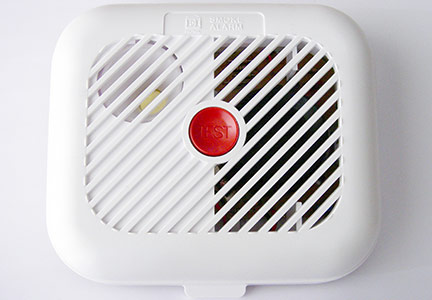The following is food for thought from authorities about why we should ensure fresh batteries in our home safety devices.
We do not strictly control Google ad content. If you believe any Google ad is inappropriate, please email us directly here.

U.S. Consumer Product Safety Commission
"An estimated 2,850 people die and 15,900 people are injured annually because of fires in residences. Although more than 90 percent of homes have smoke alarms, millions of homes have alarms that do not work. Missing or dead batteries are the main cause for non-working smoke alarms."
National Fire Protection Association
"A candle left burning in the living room of a wood-frame house ignited combustibles, and heat and smoke spread to the second floor, where it fatally injured three sleeping boys. Smoke alarms on the second floor and in the basement were useless because their batteries were missing."
City of Fresno, CA
"Many low-income families are unable to afford batteries for their smoke alarms. These same households often rely on poorly installed, maintained or misused portable or area heating equipment - a main cause of fatal home fires."
Baltimore County, Towson, MD
"Older people often fail to maintain smoke alarms by testing them and replacing the batteries, county investigators say. In homes with small children, families often rob smoke alarms of their 9-volt batteries when they need a battery for a toy."
Fire Marshal's Office, Coldwater, MI
"Never 'borrow' a battery from a smoke alarm. Smoke alarms can't warn you of fire if their batteries are missing or have been disconnected."
U.S. Navy Regional Safety Office
Virginia Beach, VA
"Working smoke alarms in your home can mean the difference between life and death. But these life-saving devices are only effective when they're working properly. Smoke alarms with batteries that are dead, disconnected, or missing can't alert you to the dangers of smoke and fire."
NFPA Fire Analysis and Research Division
"The fire broke out at 6:33 a.m. in a six-story, 18-unit apartment building, killing two children under the age of six. A juvenile playing with an open flame ignited paper goods on a kitchen table. Smoke alarms were found, but they were disconnected from the electrical system and the backup batteries were missing."
Centers for Disease Control
"Despite public health measures to prevent carbon monoxide (CO) poisonings after major power outages, multiple CO poisonings (including 10 deaths) were reported in Gulf Coast states in the wake of hurricanes. Few homes had functioning CO detectors."
Ventura County Fire Department, Camarillo, CA
"An average of three children a day die in home fires and 80 percent of those occur in homes without working smoke alarms. Nonworking smoke alarms rob residents of the protective benefits home fire safety devices were designed to provide. Most commonly cited cause of non-working smoke alarms is worn or missing batteries."
"Despite public health measures to prevent carbon monoxide (CO) poisonings after major power outages, multiple CO poisonings (including 10 deaths) were reported in Gulf Coast states in the wake of hurricanes. Few homes had functioning CO detectors."
Ventura County Fire Department, Camarillo, CA
HHI Error Correction Policy
HHI is committed to accuracy of content and correcting information that is incomplete or inaccurate. With our broad scope of coverage of healthful indoor environments, and desire to rapidly publish info to benefit the community, mistakes are inevitable. HHI has established an error correction policy to welcome corrections or enhancements to our information. Please help us improve the quality of our content by contacting allen@healthyhouseinstitute.com with corrections or suggestions for improvement. Each contact will receive a respectful reply.
The Healthy House Institute (HHI), a for-profit educational LLC, provides the information on HealthyHouseInstitute.com as a free service to the public. The intent is to disseminate accurate, verified and science-based information on creating healthy home environments.
While an effort is made to ensure the quality of the content and credibility of sources listed on this site, HHI provides no warranty - expressed or implied - and assumes no legal liability for the accuracy, completeness, or usefulness of any information, product or process disclosed on or in conjunction with the site. The views and opinions of the authors or originators expressed herein do not necessarily state or reflect those of HHI: its principals, executives, Board members, advisors or affiliates.








